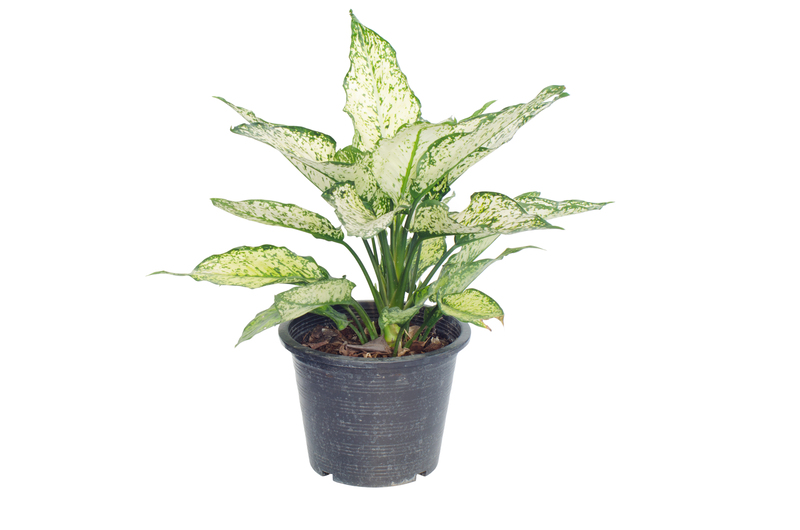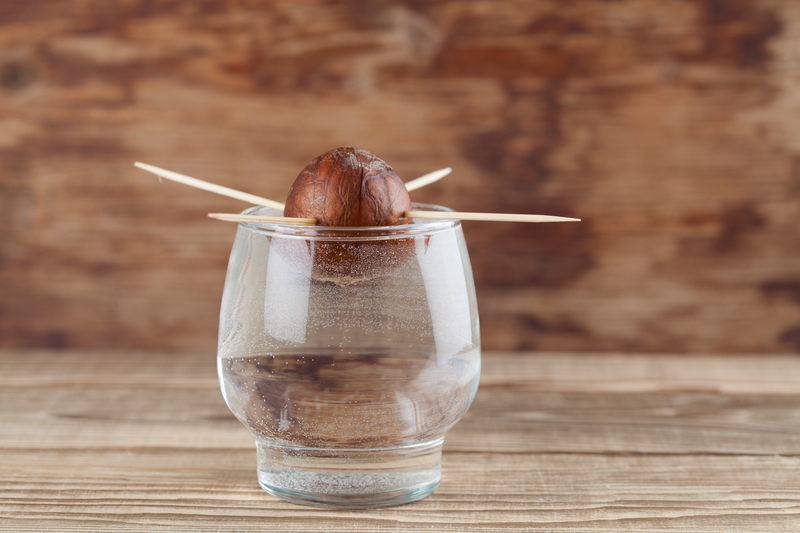Mastering the Basics: Essential Gardening Advice for Newbies
Posted on 15/09/2025
Mastering the Basics: Essential Gardening Advice for Newbies
Are you eager to transform your outdoor space or grow your own fresh produce? If you're new to gardening, mastering foundational skills can turn your dreams into a reality. Dive into this beginner's gardening guide to learn the pivotal tips and techniques every newbie should know for a flourishing green sanctuary!
Why Start Gardening? Top Benefits for Newbies
Gardening isn't just about nurturing plants--it's about nurturing yourself. If you're pondering whether to begin, consider these core gardening benefits:
- Physical Health: Gardening is a low-impact exercise that strengthens muscles and boosts fitness.
- Mental Wellbeing: Tending to plants reduces stress, anxiety, and promotes mindfulness.
- Fresh Produce: Enjoy organic fruits, herbs, and vegetables straight from your backyard.
- Environmental Impact: Green spaces aid in pollution reduction and support pollinators.
- Community Connection: Gardens bring families and neighbors together and foster new friendships.

Getting Started: Essential Gardening Tools for Beginners
Every green thumb starts with the right tools. While you don't need a shed full of gadgets, a few basic implements will make your gardening journey much smoother. Here's a checklist for every newbie gardener:
- Gloves: Protect your hands from thorns, dirt, and blisters.
- Hand Trowel: Indispensable for digging, planting, and moving soil.
- Watering Can or Hose: Keeps your plants hydrated and healthy.
- Pruning Shears: Maintain shape and remove dead or unwanted growth.
- Spade or Shovel: Ideal for turning soil and creating garden beds.
- Garden Fork: Helpful for aerating compacted soil.
- Rake: Essential for leveling soil and removing debris.
Tip: Invest in high-quality, comfortable tools to avoid injury and ensure longevity.
Planning Your Garden: Location, Layout, and Plant Selection
Creating a successful garden begins long before you plant a seed. Smart planning is crucial--here's how you can set yourself up for abundant blooms and harvests.
1. Assess Your Site
- Sunlight: Most vegetables and flowers require at least 6 hours of direct sun daily. Track where sunlight hits your garden throughout the day.
- Soil Type: Is it sandy, loamy, or clay-heavy? Conduct a simple soil test with your hands or use an at-home kit.
- Drainage: Avoid boggy spots where water collects. Plants' roots can rot without good drainage.
- Accessibility: Is your garden easily reachable for maintenance and watering?
2. Decide Garden Type
- In-Ground Beds: Traditional, great for larger spaces.
- Raised Beds: Excellent for poor soil or limited spaces. They warm up quickly in spring for early planting.
- Containers/Pots: Perfect for patios, balconies, or renters.
3. Pick the Right Plants
- Climate and Zone: Use the USDA Plant Hardiness Zone Map to choose varieties suited to your region.
- Sunlight Needs: Group plants by their light requirements.
- Skill Level: New to gardening? Start with low-maintenance, hardy plants such as marigolds, sunflowers, lettuce, and radishes.
Pro Tip: Mix and match vegetables, herbs, and flowers for beauty, variety, and to deter garden pests naturally!
The Secrets of Soil: Foundation of a Healthy Garden
Your soil is your garden's heart and soul. Without fertile, well-structured earth, even the toughest plant will struggle. Here's how to create perfect growing conditions:
- Soil Testing: Use an easy home kit to check pH (most plants thrive in 6.0-7.5) and nutrients.
- Enrich Soil: Add organic matter like compost, leaf mold, or aged manure to boost fertility, drainage, and water retention.
- Avoid Compaction: Don't step directly on garden beds; use paths or stepping stones.
- Mulching: Spread bark, straw, or leaves over the soil to lock in moisture, regulate temperature, and smother weeds.
Remember: Healthy soil equals healthy plants. Feed your soil, and your garden will reward you season after season.
Planting Techniques: How to Sow Seeds and Transplants
Correct planting ensures your garden gets the best possible start. Let's break down the basics for newbies:
Direct Sowing (Seeds)
- Read the Packet: Follow depth and spacing instructions on your seed packet.
- Prep the Soil: Rake beds smooth and remove rocks or debris.
- Sow Evenly: Plant seeds uniformly and gently cover with soil.
- Water Gently: Use a fine spray to avoid disturbing seeds.
Transplanting (Seedlings or Nursery Plants)
- Harden Off: Gradually acclimate indoor-grown plants to outdoor conditions over 5-7 days.
- Plant at the Right Depth: Most should be set at the same depth as in the pot, except tomatoes--bury the stem for stronger roots.
- Firm Soil Around Roots: Eliminate air pockets for stability and moisture contact.
- Water Immediately: This helps settle seedlings and reduces transplant shock.
Quick Tip: Plant in the early morning or late afternoon to avoid stressing new seedlings in midday sun.
Watering Wisdom: Tips for Healthy, Thriving Plants
Proper hydration is the keystone of garden care. Here's how to avoid overwatering or underwatering:
- Morning is Best: Reduces evaporation and prevents mildew and fungal diseases.
- Deep, Infrequent Watering: Encourage roots to grow deep by soaking soil rather than lightly sprinkling daily.
- Check Soil Moisture: Stick your finger an inch below the soil; water only if it's dry at that depth.
- Mulch to Retain Moisture: Mulching around plants lowers water needs and keeps roots cool.
- Avoid Leaf Wetting: Water at soil level to minimize disease risk.
Essential Plant Care Tips for Gardening Beginners
- Weeding: Remove weeds regularly--these unwanted guests steal water and nutrients from your plants.
- Pruning: Trim away dead, diseased, or crowded branches to enhance airflow and stimulate new growth.
- Fertilizing: For best results, feed your garden organically with compost, worm castings, or a balanced slow-release fertilizer.
- Support for Tall Plants: Use stakes or cages for tomatoes, peas, and climbers to prevent damage and disease.
- Crop Rotation: Change plant locations each year to prevent pest and disease build-up.
Dealing With Common Garden Challenges
- Pests: Encourage beneficial insects like ladybugs and use physical barriers, such as row covers.
- Diseases: Water in the morning, avoid crowding, and promptly remove infected plants.
- Animals: Consider fencing or netting to deter deer, rabbits, or birds.
Remember: The best defense is a healthy, diverse garden with resilient plants!
Gardening Through the Seasons: Year-Round Planting Advice for Beginners
Gardening is a year-round pursuit. Here's how you can adapt your efforts as the months roll by:
Spring
- Start seeds indoors or sow cool-season crops (lettuce, spinach, peas) outside.
- Prepare new beds, test soil, and prune shrubs and trees.
Summer
- Plant heat-loving vegetables (tomatoes, peppers, beans).
- Mulch, water deeply, and keep on top of weeds and pests.
Autumn
- Sow winter greens or garlic; plant spring bulbs.
- Collect fallen leaves for compost; clean up dead plants.
Winter
- Plan next year's garden and order seeds.
- Maintain tools, compost, and protect perennials with mulch or covers.
Common New Gardener Mistakes and How to Avoid Them
- Overplanting: Crowded gardens lead to weak, disease-prone plants. Space is crucial!
- Neglecting Soil Preparation: Rushing into planting without prepping the soil leads to poor growth.
- Ignoring Plant Labels and Guides: Always check a plant's water, light, and spacing requirements.
- Impatience: Gardens take time to flourish! Celebrate small wins and keep learning.
- Using Harsh Chemicals: These can harm pollinators and the environment. Choose organic, gentle solutions first.
Frequently Asked Questions for New Gardeners
How Often Should I Water My Plants?
Water needs vary by plant, weather, and soil type. As a rule of thumb, once or twice per week with deep soaking is ideal for most gardens. Always check your soil moisture before watering.
What's the Best Time of Day to Garden?
Early morning and late afternoon are best for both planting and maintenance, especially in hot climates.
I Don't Have a Yard. Can I Still Garden?
Absolutely! Container gardening or vertical gardens fit well on balconies, windowsills, and patios. Choose compact varieties and good-quality potting soil.
How Can I Start Composting as a Beginner?
Combine kitchen scraps (vegetable peels, coffee grounds), yard waste (grass clippings, leaves), and a bit of soil in a bin or pile. Turn regularly to aerate, and in a few months, you'll have black, crumbly compost for your garden!

Gardening Resources for Beginners
- Gardener's Supply Company Beginner Guides
- Royal Horticultural Society: Beginners Guide
- Penn State Extension Gardening Resources
Final Thoughts: Your Journey to Gardening Success
Mastering the basics of gardening is not just about dirt and seeds--it's about cultivating *patience, curiosity, and joy* in your everyday life. Embrace each season's changes, experiment bravely, and remember that growth comes from trial and error. Every gardener was a newbie once, and every beautiful garden began with just one small seed.
Ready to get planting? Whether you're sowing your first tomato or designing a flower bed, your journey to becoming a master gardener starts today!
For more essential gardening advice for newbies and in-depth guides, bookmark this page and join our green-thumb community!



